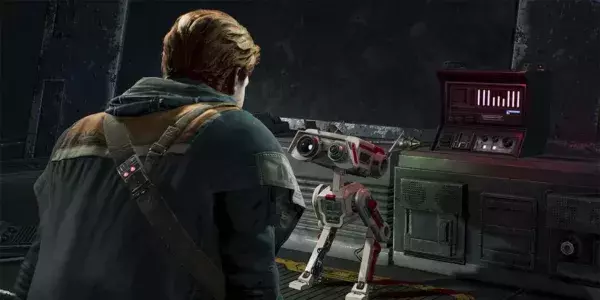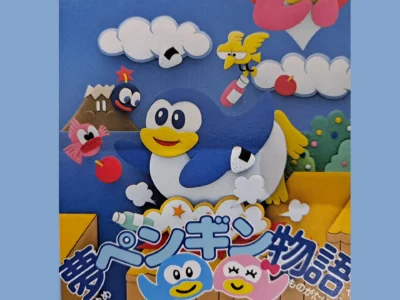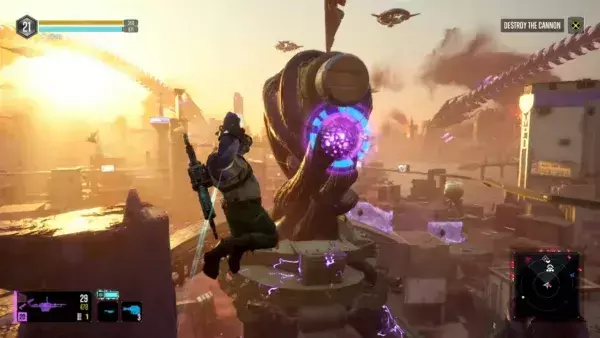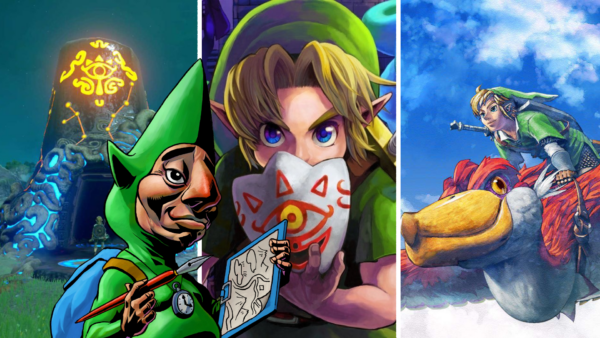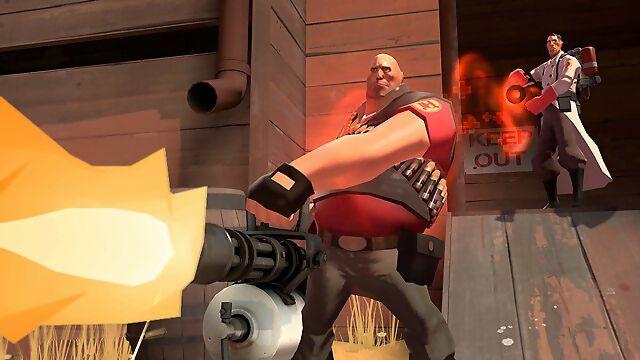
Although it might seem logical that we’d want to ensure each element in our game is perfectly balanced, that can lead to flat, uninteresting experiences where it doesn’t matter which option you choose. Instead, our goal is to make each of the elements in our game balanced enough to be a viable option but to leave each with pros and cons that allow for varied approaches. For example, players could control Ken or Ryu in Street Fighter but they were basically identical, so the choice was purely cosmetic. Street Fighter II’s varied characters, meanwhile, each had strengths and weaknesses, making them less balanced but much more interesting.
INITIAL NUMBERS
Throughout this article I’ll be referring to ‘elements’, by which I mean each ‘thing’ in your game that has numbers attached, such as characters (health, speed, jump height), weapons (damage, reload time), treasure chests (gold inside, difficulty to pick the lock), and so on. Each element contributes to your game’s balance, with changes to one causing anything that interacts with it to become more or less effective.
Games are driven by numbers, but it can be difficult to know where to start your scale from. Should your weapons be dealing 4, 400, or 4000 damage? It doesn’t generally matter whether you go small or big as long as you stick to that throughout, but there are pros and cons to each end. Bigger numbers leave room for granular balancing (+1 to 4 is a 25% increase, whereas it’s just a 0.25% gain to 400), but can be intimidating for players if you’re going to expose the values to them during play. Unless part of your game’s appeal is studying big numbers and calculating which is better, a +1 gain is a more intuitive and ‘readable’ increase when the original number is 4 as opposed to 4000.

Fighting games strive to ensure each of their characters is balanced enough to be a viable contender while also countering the strengths of other fighters.
Riot ensures its new League of Legends characters are vaguely balanced by creating them like an RPG. It spends a pool of points on the character’s various stats, then assigns them benefits that cost points and disadvantages which earn points back. This doesn’t produce fully balanced characters, but it’s good enough as a starting point, because while you might be tempted to try and balance your game as you input these initial numbers, you’ll find you continually need to revisit earlier numbers as later decisions ripple out. My suggestion? Focus on making your game interesting and exciting first, then dig into whether particular elements are overpowered or underpowered later.
SPOTTING PROBLEMS
Once you have enough elements interacting, you’ll be able to spot balance problems through testing your game. Here are three approaches:
1. Run playtests with people who are new to the game. You should ask them which elements they think are too powerful or not powerful enough as this gives a player’s perspective (more on this later). But you should also watch which elements they’re favouring or ignoring, as that might indicate something is overpowered or underpowered, or just difficult for new players to understand.
2. Build analytics into your game. This involves writing data to a file whenever something you want to track happens during play: What killed that enemy? What caused that player death? What’s giving players their resources and what are they spending them on? Almost all mobile games are tracking analytics across thousands of players, but they can still work on a smaller scale. One pitfall to note is that if you change something big in your game it can invalidate your previous data, forcing you to flush it and start again.
3. Automated testing. You can create programs that effectively run thousands of playtests overnight. These don’t use graphics from the game, but instead produce a spreadsheet of the results. For example, the last card game I worked on would pit cards against each other every night and produce a spreadsheet. Converting that into a graph let us see which cards were inflicting too much damage or dying too quickly for their points cost. This is a brute force approach that can’t spot unusual quirks like a character having medic or thief powers, but it can still provide useful data.
Ensure you’re looking for balance issues from multiple angles, because simply studying one set of numbers might not be enough to reveal the problem. For example, at one point, the Overwatch character Mercy was so overpowered that every team was guaranteed to use her, but that wouldn’t show up if you were just looking at her win/loss ratio because she was always on both the winning and losing teams.
Or in Slay the Spire, the team noted that the Madness card was in too many winning decks, but investigation revealed that the card wasn’t too powerful – it was simply being added to decks by an event right before the final boss.

By mixing aspects of RPGs into choosing which weapons to use, Borderlands makes comparing multiple complex numbers part of its appeal.
PERCEPTION VS FACTS
Something else to consider is how much you should even worry about balance problems, because addressing them takes up time you could be spending elsewhere. There are two factors here: how big an impact the problem has, and how many other elements will become unbalanced if you adjust this one.
If you consider it logically, an overpowered element is only a problem if it prevents your players using other elements (as you effectively wasted your time creating those elements, and players might get bored sticking to the best choice). But rather than endlessly tweaking numbers you could instead have, the game forces players to use different elements (must use stealth, must snipe, must use acid), reducing how often they can use the overpowered element. You can also control how long it takes players to get the element and how much ‘ammo’ it has, letting players enjoy being overpowered in moderation. Finally, you can make the overpowered element difficult for new players to use, restricting it to veterans who’ve explored the alternatives first.
The other aspect to consider is player perception, because you’ll often find that it’s less important how balanced something is compared to how balanced players perceive it to be. For example, players complained that one of Wolfenstein: Enemy Territory’s submachine guns was more powerful than the other, but they inflicted identical damage and the only difference was that one gun had a cooler sound effect when fired. But simply telling players they’re wrong and that something is definitely balanced seldom works. Even if you absolutely know something is correct, if your players perceive it to be unbalanced then you should look for ways to act on it (not necessarily changing numbers but perhaps making it feel more or less powerful). See Valve’s Artifact for what happens when developers simply ignore player feedback in relation to perceived problems…
LIVING GAMES
While you might patch a finished game to address balance problems, ‘live’ service games introduce a new factor – the long-term metagame. Metagaming is the choices players make outside core gameplay (such as which character to pick or cards to include in their deck), and metagames inevitably evolve towards choosing the most powerful options because doing so helps players win more games. The longer you want your game to live through updates, the more important it is that your metagame continually shifts in order to avoid stagnation. How you balance your game can have a major impact here:

Artifact’s long, complicated matches meant a ‘hardcore’ competitive player base, so player perception of luck being too heavily involved was a problem.
1. Tone down overpowered elements. If your players have worked out that an element is too effective for its cost then you can simply lower the stats of that element to bring it into line. Suddenly having their favourite choice downgraded like this can upset players, but on the other hand, it provides a constantly cycling metagame rather than a gradually escalating one, which can benefit games that you want to keep alive for a long time.
2. Boost underpowered elements. The opposite approach is to increase the stats of underpowered elements to make them viable. This approach keeps your metagame cycling without anything being downgraded but inevitably leads to power creep as your numbers only ever go up. How long you can sustain this growth before the gameplay breaks determines if this is a problem.
3. Cycle elements out over time. The approach taken by real-world card games like Magic: The Gathering is to only outright ban elements that turn out to have egregious balance issues, and otherwise just cycle out older elements as new ones are introduced. As this takes a while, it forces players to come up with new strategies to balance the current meta themselves, meaning your game can suffer stagnation if they fail to do this.
HARD AND SOFT COUNTERS

Live, serviced games like Destiny need to keep on top of balance to ensure players always want the latest set of weapons and armour.
Rather than balancing through tweaking numbers, you can affect player choices by implementing hard or soft ‘counters’. Hard counters completely shut down a particular strategy, while soft counters just give an advantage against a strategy. An example hard counter is Command & Conquer: Red Alert’s flame tank, which burns any number of infantry and so shuts down an opponent relying on troop-rush tactics. Soft counters are seen in fighting games, where fast, agile characters prevent slow but powerful characters from dominating (with other characters, in turn, countering the fast ones). Some esports even allow each side to ban one choice before a match, forcing everyone to master a range of options in case their preferred choice is lost.
BALANCING MULTIPLAYER GAMES
So far, we’ve talked about balancing individual elements in your game against each other, but what about balancing between players in a multiplayer game? Everything we’ve covered in terms of dealing with overpowered or underpowered elements still applies, as does metagaming (with players either flocking to overpowered elements or coming up with counters to it), but now you also have to manage that some players are simply going to be better at your game than others. Obviously that’s not inherently bad, but games with no systems to help losing players catch up tend towards a competitive audience, whereas including some balancing to help stragglers can attract a casual player base.
1v1 games generally include MMR (Match-Making Ranking), which is an algorithm that tries to ensure players are paired with opponents of a similar skill level to ensure a 50/50 win/loss ratio. Good MMR systems are a topic all of their own, so you’ll need to research them online, but one thing they all have in common is they need data to work. They collect this by tracking your wins and losses across your time playing the game, meaning they don’t work if your game simply allows a bunch of people to get together and play. There are techniques that can help balance players during a single game, though.
You can introduce elements of chance, meaning everyone has an equal likelihood of getting the lucky break that helps them win. Naturally, this moves the game towards a casual audience until, at the extreme end, you get entirely chance-driven games like roulette or Mario Party.
If it’s applicable, you can let players team up to take on the leader together, and even win as an alliance. We covered kingmaking in Wireframe 38 (wfmag.cc/38), so check that out for more on this kind of balancing.

There’s a difference between balance and what players perceive as fair. Watch Sid Meier’s 2010 GDC keynote for insights into ‘balancing in the player’s favour’.
If your game doesn’t allow players to team up, then making it difficult to work out who’s winning can be effective because it avoids having people who are far behind simply giving up. Pokémon UNITE tells you who’s winning but not by how much, meaning it’s worth pushing on in case you’re only just behind.
A related idea is giving your game multiple win conditions, which complicates what players need to think about but allows you to balance each approach against each other so that if one player is dominating in a certain aspect, another player can still snatch a win. Counter-Strike’s bomb defusal victory condition is a good example because it allows players to get involved, even if they’re poorly armed or not very good at shooting.
Finally, we have the classic balancing method of including catch-up mechanics that help players who are lagging stay in contention, with the iconic example being Mario Kart giving better pick-ups to players at the back. The downside to this approach is that it may not sit well with competitive players, because no matter how skilful you are, the game won’t let you get far ahead. You could make catch-up optional, but you could also take the opposite approach of allowing the most skilled players to handicap themselves in order to keep things competitive. You can take this a step further by giving more rewards to players who deliberately disadvantage themselves, introducing a gambling aspect of greater risk for greater reward.

Wolfenstein: Youngblood allows each co-op player to set their own difficulty level without affecting their teammate, meaning players can balance the game themselves.
NO SHORTCUTS
Players are inevitably going to choose their favourite characters, weapons, or vehicles from your game for a range of reasons, such as aesthetics or ease of use. That’s great, but there’s also a psychological factor called ‘medium maximisation’ involved here, and that’s the reason we try to ensure each element is vaguely balanced. Medium maximisation is the tendency for players to forget about having fun in the pursuit of winning. It means they’ll find and use overpowered elements that allow them to win, even if doing so makes the game boring or repetitive (ironically leading players to stop playing the game because it’s no fun). Therefore it’s in our interest as developers to ensure there’s no single ‘best’ option in our game, forcing players to use a range of elements and, in doing so, keep having fun.
Hopefully you can see why balancing your game’s elements against each other and balancing different player skill levels is important, though as mentioned at the beginning, the goal is to provide a range of interesting choices and counters over a perfectly balanced but bland experience. There are no easy shortcuts here – it simply boils down to studying your game as much as possible. But on the plus side, if someone’s complaining about balance issues, then you know they’re engaged by your game!


